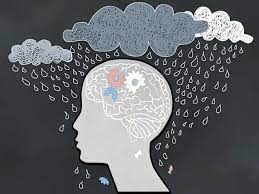Anxiety is a prevalent mental health issue affecting millions globally. It’s a natural stress response, characterized by feelings of worry, fear, and apprehension. While occasional anxiety is a normal part of life, persistent anxiety that interferes with daily activities might indicate an anxiety disorder. Fortunately, there are numerous ways to manage anxiety effectively, ranging from lifestyle changes to professional treatments, including anxiety medication. This article explores the journey from turmoil to tranquility by navigating the complex landscape of anxiety.
Understanding Anxiety
What is anxiety?
Anxiety is the body’s natural reaction to stress—a feeling of fear or apprehension about what’s to come. It can manifest in various ways, including physical symptoms like a racing heart, sweating, and trembling, as well as psychological symptoms like excessive worry and restlessness.
Types of Anxiety Disorders
Several types of anxiety disorders exist, each with distinct features:
- Generalized Anxiety Disorder (GAD): characterized by chronic and excessive worry about various aspects of life.
- Panic disorder is characterized by sudden and recurrent panic attacks and intense periods of fear, accompanied by physical symptoms.
- Social anxiety disorder is characterized by an intense fear of social situations and the judgment of others.
- Specific Phobias: Irrational fear of specific objects or situations.
- Obsessive-Compulsive Disorder (OCD): Involves unwanted and repetitive thoughts (obsessions) and behaviors (compulsions).
Identifying triggers and symptoms
Recognizing Triggers
Identifying what triggers anxiety is a crucial step in managing it. Triggers can vary widely, from work-related stress and personal relationships to financial concerns and health issues. Keeping a journal to track when and where anxiety occurs can help identify patterns and triggers.
Common Symptoms
Anxiety symptoms can be both mental and physical. Common mental symptoms include persistent worry, trouble concentrating, and a sense of impending doom. Physical symptoms often include an increased heart rate, rapid breathing, sweating, and fatigue. Recognizing these symptoms early can prompt timely intervention.
Managing Anxiety
Lifestyle Changes
Simple lifestyle changes can significantly reduce anxiety. Regular physical activity, such as walking, running, or yoga, helps release endorphins that improve mood. Adequate sleep is also vital, as sleep deprivation can exacerbate anxiety. Mindfulness practices, such as meditation and deep-breathing exercises, can help calm the mind and reduce stress.
Cognitive Behavioral Therapy (CBT)
CBT is a widely-used therapeutic approach for anxiety. It helps individuals identify and challenge negative thought patterns and behaviors contributing to their anxiety. By replacing these with more positive and realistic thoughts, individuals can reduce their anxiety levels and improve their overall mental health.
Anxiety Medication
For some, lifestyle changes and therapy might not be enough. In such cases, anxiety medication can be a valuable tool. Several types of medications are available:
- Selective Serotonin Reuptake Inhibitors (SSRIs): Commonly prescribed for anxiety disorders, they work by increasing serotonin levels in the brain, which can improve mood and reduce anxiety.
- Benzodiazepines: These medications are effective for short-term relief of severe anxiety symptoms. However, doctors typically prescribe them for short durations due to their potential for addiction.
- Beta-blockers: Typically used for heart conditions, they can also help manage physical symptoms of anxiety, such as rapid heart rate and trembling.
- Buspirone is a non-addictive medication specifically for anxiety; it can help reduce symptoms without the sedation that other medications might cause.
Consulting with a healthcare provider is essential to determining the most appropriate medication and dosage, as individual needs can vary.
Seeking professional help
When to seek help
It’s important to seek professional help if anxiety becomes overwhelming and begins to interfere with daily life. Mental health professionals, such as psychologists, psychiatrists, and counselors, can provide a comprehensive evaluation and develop a personalized treatment plan.
Support Systems
Building a strong support system is crucial to managing anxiety. Friends, family, and support groups can offer emotional support and understanding. Sometimes, just talking about anxiety with someone who understands it can be incredibly therapeutic.
Conclusion
Navigating anxiety involves understanding its triggers, recognizing its symptoms, and exploring various management strategies, including lifestyle changes, therapy, and anxiety medication. While the journey from turmoil to tranquility may seem daunting, it is achievable with the right tools and support. Remember, anxiety is a common issue, and seeking help is a sign of strength, not weakness. By taking proactive steps, individuals can regain control over their lives and move towards a state of tranquility.
